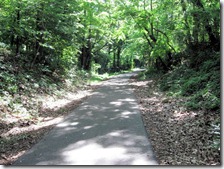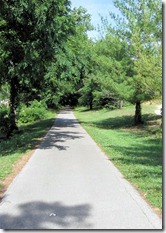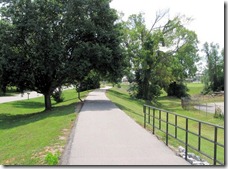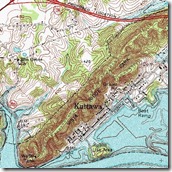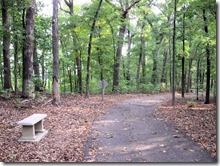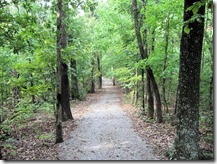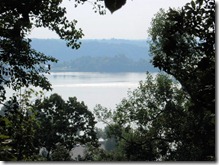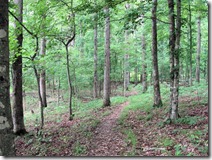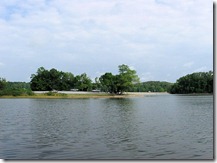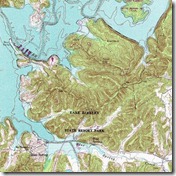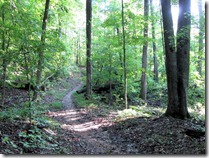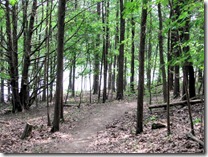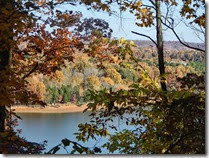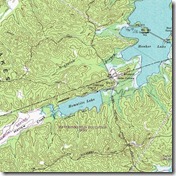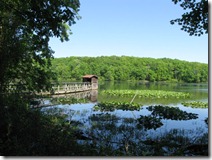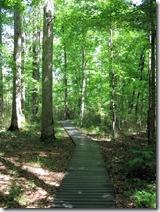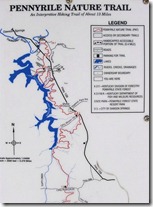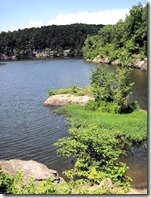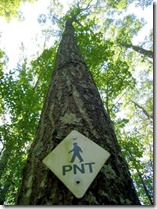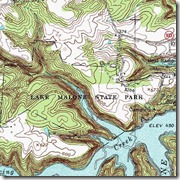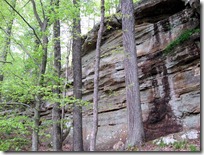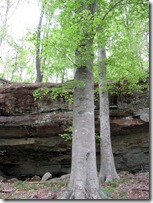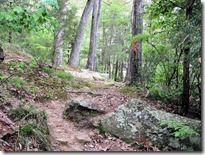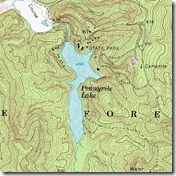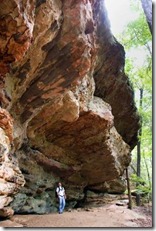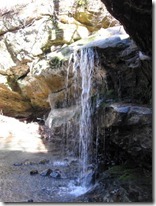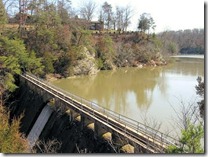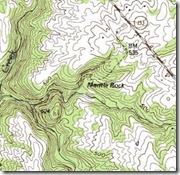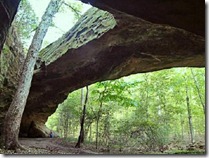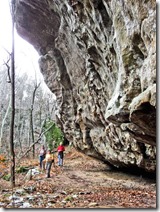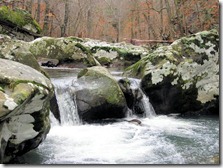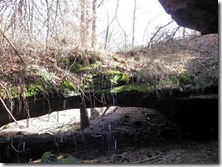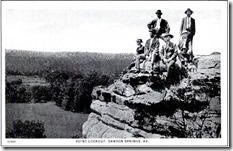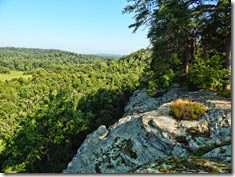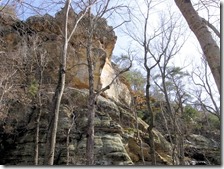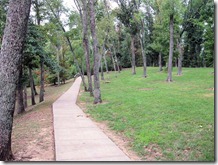 The Anderson Woodland Trail can be accessed at an Army Corps of Engineers recreation facility found in historic old Kuttawa. The website “Recreation.Gov” describes this location as follows: “Old Kuttawa Recreation Area is on the northern shores of Lake Barkley, near the narrow canal linking it to Kentucky Lake. Together, these two reservoirs combine to create one of the greatest freshwater recreation areas in the country. Take pleasure in a day of picnicking or soak up the sun at the swimming beach; either way, old Kuttawa provides an ideal setting to enjoy nature at its best.”
The Anderson Woodland Trail can be accessed at an Army Corps of Engineers recreation facility found in historic old Kuttawa. The website “Recreation.Gov” describes this location as follows: “Old Kuttawa Recreation Area is on the northern shores of Lake Barkley, near the narrow canal linking it to Kentucky Lake. Together, these two reservoirs combine to create one of the greatest freshwater recreation areas in the country. Take pleasure in a day of picnicking or soak up the sun at the swimming beach; either way, old Kuttawa provides an ideal setting to enjoy nature at its best.”
The “National Recreation Trails” website describes the amenities that can 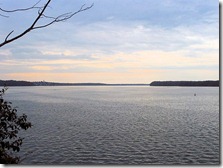 be utilized at the time of your walk along the Anderson Woodland Trail: “There are several picnic tables and grills along the trail for you to enjoy a small cookout or picnic. Adjacent to the trail is the Old Kuttawa Recreation Area, consisting of a public swimming area, swings, playground equipment, horse shoe pits, volleyball court, two restroom buildings, along with additional picnicking areas. The recreation area also offers two picnic shelters that may be reserved.”
be utilized at the time of your walk along the Anderson Woodland Trail: “There are several picnic tables and grills along the trail for you to enjoy a small cookout or picnic. Adjacent to the trail is the Old Kuttawa Recreation Area, consisting of a public swimming area, swings, playground equipment, horse shoe pits, volleyball court, two restroom buildings, along with additional picnicking areas. The recreation area also offers two picnic shelters that may be reserved.”
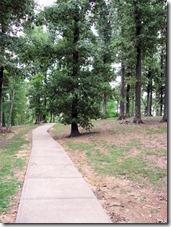 The Anderson Woodland Trail is one-third of a mile in length. It is a concrete trail and handicapped accessible; and it has a change in elevation of about fifty feet. The path “is a short scenic trail, accessible and completely shaded. It reveals some of Lake Barkley’s most scenic views. It consists of one main loop with a short walkway leading to an overlook. You can use the overlook to view the Kentucky State Penitentiary, also known as the Castle on the Cumberland; or just relax for a moment and enjoy the refreshing breeze off the lake” (National Recreation Trails).
The Anderson Woodland Trail is one-third of a mile in length. It is a concrete trail and handicapped accessible; and it has a change in elevation of about fifty feet. The path “is a short scenic trail, accessible and completely shaded. It reveals some of Lake Barkley’s most scenic views. It consists of one main loop with a short walkway leading to an overlook. You can use the overlook to view the Kentucky State Penitentiary, also known as the Castle on the Cumberland; or just relax for a moment and enjoy the refreshing breeze off the lake” (National Recreation Trails).
The “Reserve America” website states, “The half-mile Anderson Woodland Trail is an enjoyable footpath for birding and viewing the great tall trees of the region.” If you are looking for an extensive hike, however, this is not t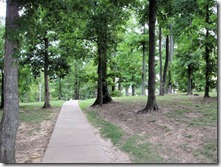 he place. There is an access to the two-mile long Kuttawa Nature Trail located adjacent to the entrance of the Old Kuttawa Recreation Area; and I would recommend combining these two trails if you are looking to add some mileage. Afterward, you may wish to check out historic Kuttawa. You will come away from a day of hiking and sightseeing feeling very relaxed. Please be respectful of this public park and walking trail, and remember to “take only pictures” and “leave only footprints.”
he place. There is an access to the two-mile long Kuttawa Nature Trail located adjacent to the entrance of the Old Kuttawa Recreation Area; and I would recommend combining these two trails if you are looking to add some mileage. Afterward, you may wish to check out historic Kuttawa. You will come away from a day of hiking and sightseeing feeling very relaxed. Please be respectful of this public park and walking trail, and remember to “take only pictures” and “leave only footprints.”

